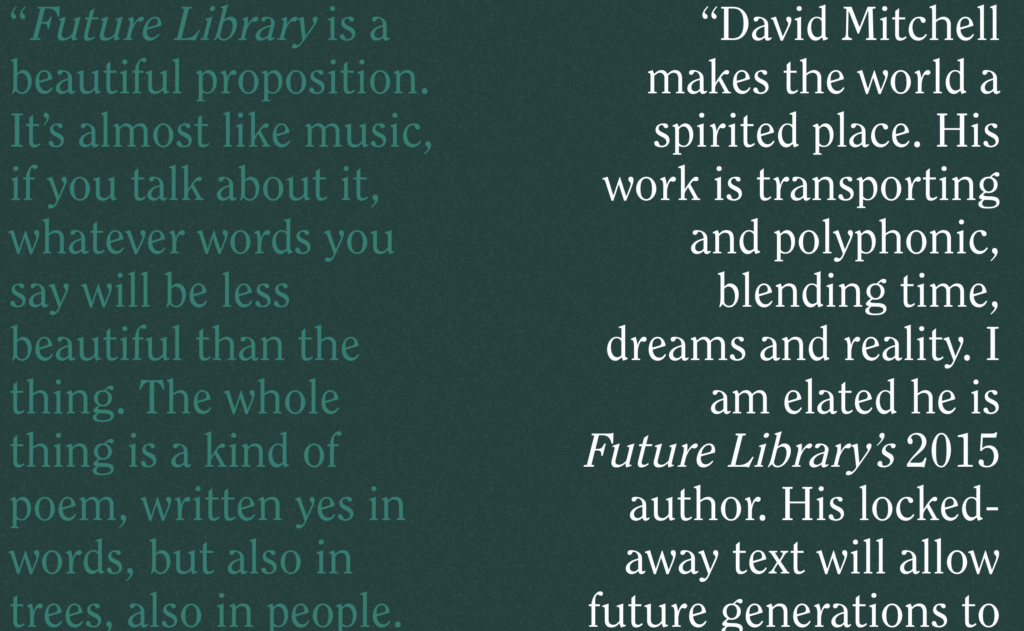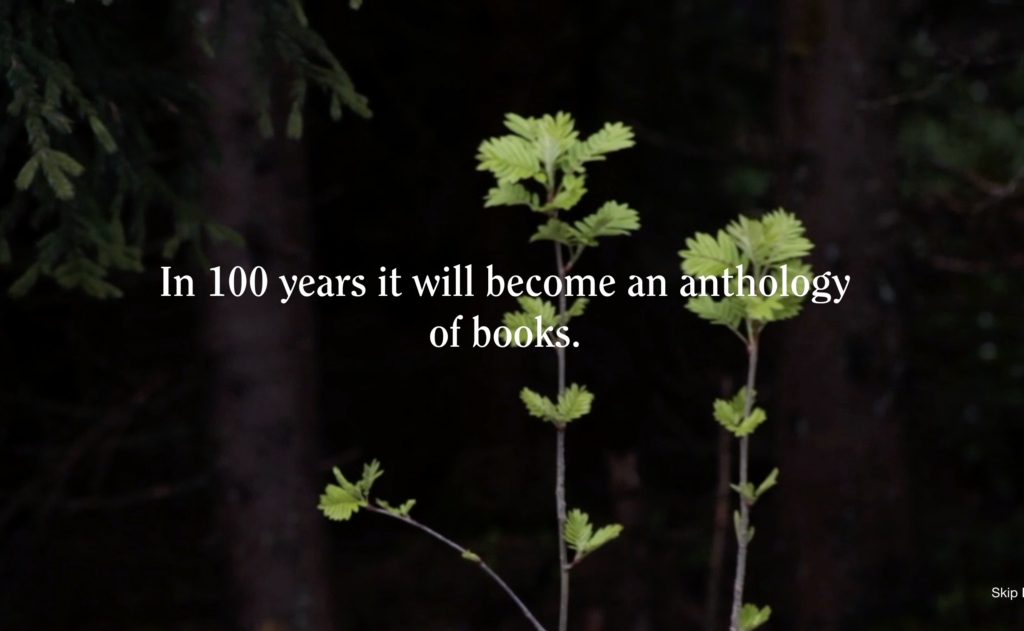Katie Patterson’s The Future Library.

Screen grab from David Mitchell’s page on The Future Library.
The website loads for a little moment, – and by that I mean pieces of data travel through the ether in my office from some untouched fibre optic cable through the physical web of connections that trace us to the physical entity that is the internet – and then there’s a voice, soothing, describing a woodland, a forest in Norway, being planted and maintained, we’re ten years into this work now, it’s timeline set from 2014 to 2114, the trees are growing, manuscripts from authors as revered as Margaret Atwood and Han Kang are being held in trust.
The artwork speaks to our desire for community, for a sense of continuity into the future whilst accepting that such a time may not come to pass, there are plans for these books to be published and housed in a timber library, there are the 90 years to come. The work engages with the inevitable temporality of the times we find ourselves in. Each of us here – and by here I mean in the internet, on one side or the other of a screen whose production necessitates both the toxic emission of sulphur hexafluoride (Citton, 2016: 198) and the subterranean accumulation of Coltan and its affiliated child labour issues in the DRC (Ojewale, 2024) – is in possession of a device that is capable of telling us everything that humanity has ever bothered to record, and therefore we are bound into a temporal conversation that fights for our attention, we are aware of our ability to access the information from the past, aware of the collective problematics facing the future and bound into distraction by an economy that needs us to keep looking away (Bishop, 2024: 26).
The Future Library then, is a beacon of hope, a sprawling prospect that gathers traction over its years and is growing both as an artwork and as a cultural artefact. I download a PDF, written by Margaret Atwood to accompany her deposit made in 2014, who concurs to this hopeful disposition, speaking of the forest enabling her to believe that things like the ‘library’, the ‘forest’ and ‘Norway’ “despite climate change, rising sea levels, forest insect infestations, global pandemics, and all of the other threats, real or not, that trouble our minds today – will still exist.”(Atwood in Patterson, Katie, 2024) It is a place I hope to visit one day, and to hope to visit somewhere is to play the game of having a future to look forward to, which is where, I like to think, our engagement with art resides. 

Screen grabs from the home page of Katie Patterson’s The Future Library. https://www.futurelibrary.no/
Bishop, C. (2024) Disordered Attention: How We Look at Art and Performance Today. Verso Books.
Citton, Y. (2016) The Ecology of Attention. 1st edition. Cambridge Malden, MA: Polity.
Ojewale, O. (2024) Child miners: the dark side of the DRC’s coltan wealth, ISS Africa. Available at: https://issafrica.org/iss-today/child-miners-the-dark-side-of-the-drcs-coltan-wealth (Accessed: 23 July 2024).
Patterson, Katie (no date) Future Library, 2014 – 2114. Available at: https://www.futurelibrary.no (Accessed: 23 July 2024).